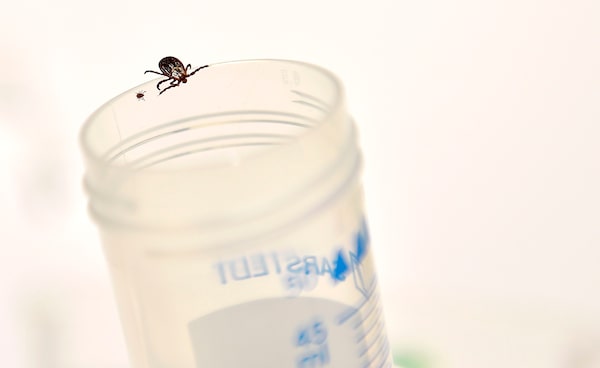Justin Bieber performs at the 2016 Billboard Awards in Las Vegas on May 22, 2016. The Canadian pop star revealed on Wednesday that he has been diagnosed with Lyme disease.Mario Anzuoni/Reuters
Pop singer Justin Bieber has revealed he was recently diagnosed with Lyme disease, highlighting an increasingly common disease in North America that health officials are struggling to handle.
Mr. Bieber, 25, posted a message on Instagram on Wednesday that he has had “a rough couple years, but [is] getting the right treatment” and is on the path to better health.
While Lyme disease is not “incurable,” as Mr. Bieber described in his post, it is a complex disease, and one that is not always easily detected or treated.
According to the Canadian government’s surveillance data, there were 2,023 cases of Lyme disease in 2017, up from 144 cases in 2009.
What is Lyme disease?
Lyme disease is caused by different strains and species of Borrelia bacteria (the most common species is Borrelia burgdorferi) and is spread through tick bites.

An adult tick crawls beside a nymph in a French lab studying Lyme disease on Sept. 28, 2018.JEAN-CHRISTOPHE VERHAEGEN/AFP/Getty Images
Lyme disease can initially resemble the flu, with symptoms such as headaches, fever and fatigue. Some individuals develop a rash, often described as resembling a bull’s eye. If left untreated, symptoms can become more severe, including heart and neurological problems, such as an abnormal heartbeat, mental confusion and nerve pain.
Why is it on the rise?
Jim Wilson, president and founder of the Canadian Lyme Disease Foundation, said it’s not fully understood why Lyme disease is on the rise, but climate change is often cited as a potential reason.
Canadian government data show populations of ticks that can transmit Lyme disease-causing bacteria are spreading, particularly in central and eastern Canada.
Increased public awareness of the disease may also contribute to an increase of reported cases.
What is the process for testing for Lyme disease?
Mr. Wilson explains Canadians are typically tested for Lyme disease only if they have been in an area where Lyme-bacteria-carrying ticks are endemic.
The standard laboratory testing conducted in Canada is called two-tiered serology. The first part involves an initial screening for antibodies produced by the body to fight the bacteria. If those antibodies are detected, the second step is called a Western blot test that detects antibodies for a specific strain of Borrelia burgdorferi.
The problem is, Mr. Wilson says, these tests do not cover other strains and species of the bacteria that can cause Lyme disease.
Another important shortcoming of these tests is they are indirect; they only measure the body’s response to the pathogen, but not the presence of the pathogen itself, says Melanie Wills, director of the G. Magnotta Lyme Disease Research Lab at the University of Guelph.
It can take a few weeks for the body to produce an immune response that is detectable, so these tests are unable to immediately tell whether someone is infected, she said. This can be problematic, since patients have the best chance of a “clean," or uncomplicated, recovery if they are treated early, before the infection spreads beyond the site of the tick bite to other parts of the body.
An additional concern is that some infected individuals may have a suppressed immune response and thus will not test positive for Lyme disease with current tests, Dr. Wills said.
While potentially more effective testing methods are being used in research, none has yet been adopted in standard practice, she said.
How is Lyme disease treated?
The standard treatment for Lyme disease is antibiotics. In more severe cases, other drugs may be used.
But, Dr. Wills said, because current tests cannot identify the presence of the pathogen, it can be difficult for doctors to know for certain when and whether a patient they’ve treated is no longer infected.
In some cases, she said, symptoms resolve with antibiotics even if the disease was not caught early, but in other cases, they don’t. Without a direct test, it is difficult to know how best to treat a patient with persistent symptoms.
“You don’t necessarily know what the issue is – whether it’s a live infection that is ongoing, whether it’s a different infection with a different microorganism, whether it’s a consequence of the infection," Dr. Wills said.
Since detection and treatment are imperfect, the best thing people can do is try to prevent the bites, such as by covering up, using insect repellent and checking for ticks, even in urban areas.
“Don’t be scared to go outside, but just be aware,” Dr. Wills said.
 Wency Leung
Wency Leung